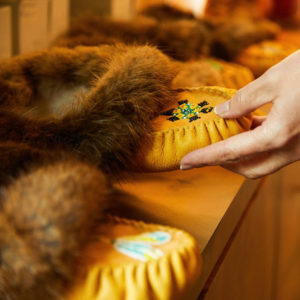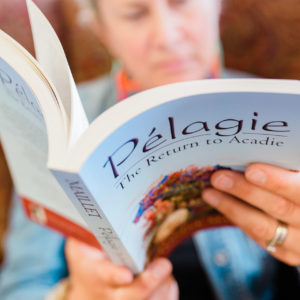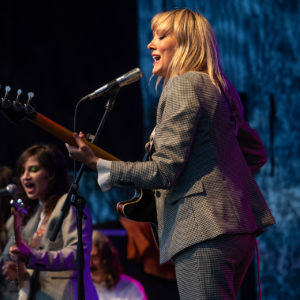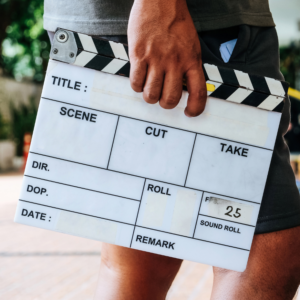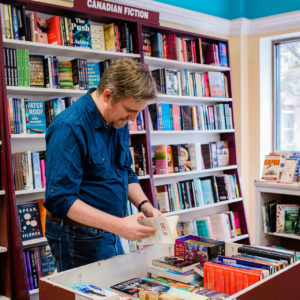
Chantal Baudouin
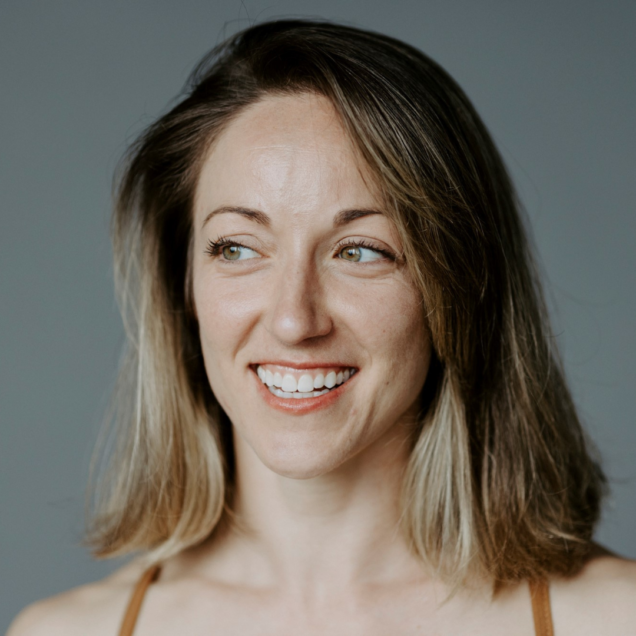
Chantal Baudouin received her professional diploma from the Dance Arts Institute of Canada (formerly The School of Toronto Dance Theater). She has collaborated with choreographers such as Serge Bennathan, Anna Blewchamp, Thomas Hauert (Brussels), Christopher House, Gabriel Forestieri, Chantal Cadieux and Pierre-Paul Savoie. In 2012, Chantal performed Joe et Rudolphe, by Jean-Pierre Perrault (adapted by Ginelle Chagnon), as part of the Canada Dance Festival at the National Arts Centre Theatre (Ottawa). She has danced for Toronto Dance Theater (Toronto), ProjectLIMB (New York), PPS Danse (Montreal) and DansEncorps (Moncton). She has toured provincially, nationally and internationally on more than one occasion; Chantal was privileged to dance at the V Jeux de la Francophonie in Niamey, Niger, and to participate in the Artist-in-Residence program at the Hong Kong Arts Festival (2018). She won the Éloizes : Artiste de l'année en danse Award in 2018.
Chantal signed her first creation-production, Les Nœuds de Gustav, in collaboration with Jessie Garon, in October 2022; the premiere was presented to a sold-out audience at the Aberdeen Cultural Centre. Chantal was selected to represent Canada-New Brunswick at the IX Jeux de la Francophonie in Kinshasa, Republic of Congo. She presents her first dance film, Bagage, as part of the Volet d'arts médiatiques du Festival international du cinéma francophone en Acadie (FICFA) 2024.
Alongside her career as a performer, Chantal is a choreographer, dance teacher at Université St Thomas, contemporary dance and Multi Barre teacher at École DansEncorps, rehearsal director and cultural mediator. She also works in her local community as a guest artist in schools and preschools. She is a member of various arts and cultural organizations, including the Association acadienne des artistes professionnel(le)s du Nouveau-Brunswick and the Canadian Alliance of Dance Artists (CADA/East).
Chantal currently dances for Compagnie DansEncorps in the show Le Corps en 4 saisons and is beginning a new independent creation of her own, financially supported by the New Brunswick Arts Board and the Canada Council for the Arts. Chantal is nominated for the Prix Éloizes: Artiste de l'année en danse 2024.
What drew you to dance?
My childhood sport was artistic gymnastics; I started classical ballet classes at DansEncorps as a complement to my training. I then diversified into other dance styles, including modern, jazz, hip-hop and jigging. Shortly afterwards, a back injury led me to choose dance over gymnastics as my main activity. I continued to invest myself more and more in this artistic discipline, until I decided to make it my passion, my study and my career.
What stimulates you most about your practice?
Exchanges and collaborations, the ramification of human connections through dance. My creative practice is greatly enriched by close collaborations with artists in dance and other disciplines. Each level is stimulating and enriching in its own way: firstly, the encounters and weaving of ideas between artists; secondly, sharing with a wider community; and finally, thirdly, the opening of practice and direct encounter with others through movement.
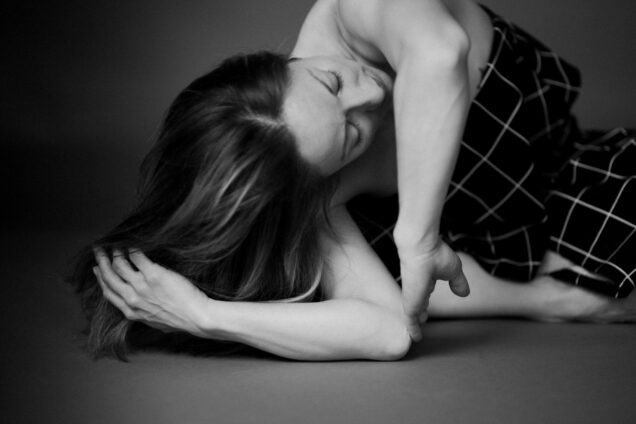
How did your training and experience help you to create and innovate in your artistic practice?
My training has given me a better understanding of the body, its language, and its possibilities; my physical training has endowed me with athletic strength and rigor; my professional experiences have enabled me to push my creative limits.
As a graduate of Canada's Dance Arts Institute (formerly The School of Toronto Dance Theater), my professional training was hands-on, focusing on contemporary dance and modern Graham technique; a technique that emphasizes the use of breath, muscle contraction and dramatic expression to create deep, emotionally charged movement. This training played an important role in perfecting my tool, my body, and certainly influences the way I move to this day. Gymnastics and my enjoyment of turning my head upside down and using different supports on the floor also live on in the way I dance.
My experiences as a performer were varied, but for a time, youth performances were an important part of my career, offering me a platform to reinforce the dancer's role as a vehicle for positive and educational messages. It has also had an impact on my practice by bringing together the disciplines of dance and theater, inspiring me to create multidisciplinary works that are accessible to a wider audience.
I'm still discovering. My explorations of movement, the discovery of new techniques and the new encounters that take place in my life continue to inform and evolve my practice.
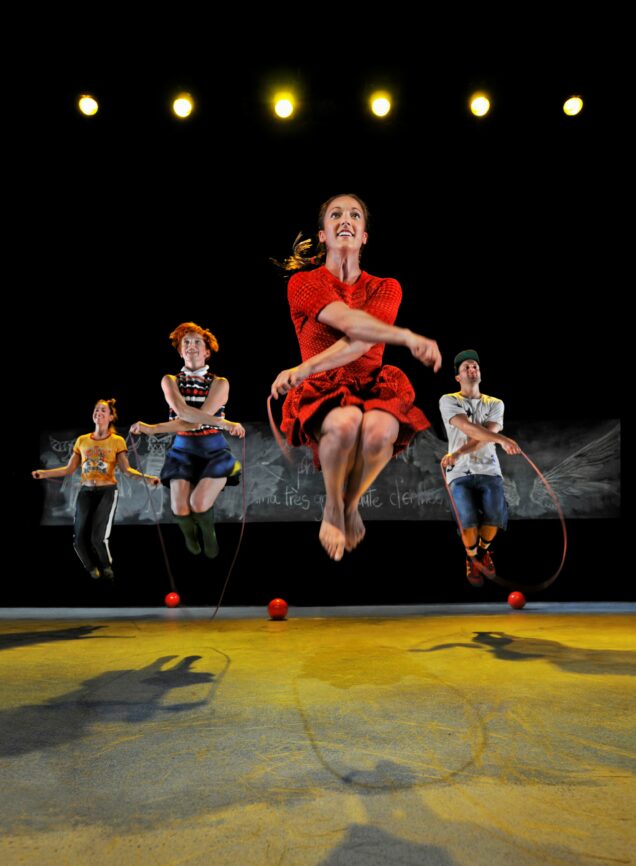
How has living and working in New Brunswick helped and/or inspired you on your journey?
My career path began outside New Brunswick; I lived in Toronto and Montreal, where I developed my career as an interpreter. My sense of belonging drew me back to my family and my Acadie. By choosing to move away from the major dance centers, I had to diversify as an artist; I could no longer content myself with working as a performer to fill my time. At first, I resisted change, living in Moncton and working/touring with companies elsewhere. I also complemented my performing work with administrative and coordination work for arts organizations. Finally, I embarked on my own creative initiatives, discovering a whole new artistic sphere to explore and anchoring my personal practice in Moncton. I also devote a great deal of my time to dance education and arts accessibility, a facet of my career that has evolved especially since my return to New Brunswick. I'm happy to be able to contribute to the development of dance, and to be able to do so in French, in Acadie.
What motivates your creativity?
Everything and nothing!
I draw a lot from my own experience. I'm interested in both the imperfection of the human experience and its splendor. I like to play with the superposition of the concrete and the abstract. All I need is a seed, an idea; the water and the sun, the time and attention I put into it. For me, this seed can be an image, a theme, an anecdote, a physical concept, a text or a piece of music. It can be found by chance, through visual research or born of dialogue.
Depending on the scope of the project, the initial idea can be quite simple, and then I follow my instincts and curiosity, improvising to create movements and build a choreography, a captivating visual universe that includes the body in space and from which emerge images that I find evocative, beautiful, interesting, or poetic.
Just as for some projects I draw my inspiration from deeply personal or universally significant issues, in other scenarios I enjoy creating in a more playful and spontaneous way.
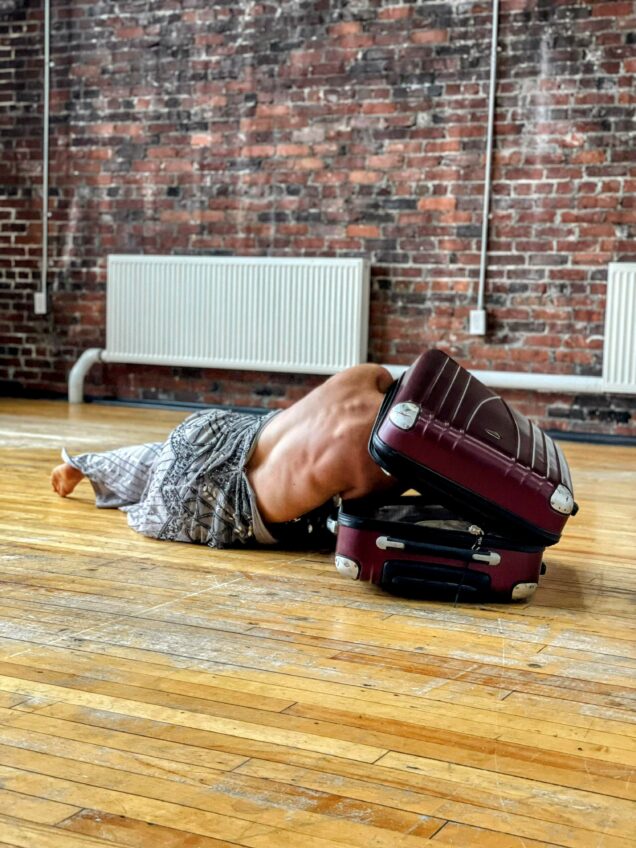
How does the process of creating a choreography unfold?
In contemporary dance, choreographic processes are highly disparate, and depend very much on the choreographer and his or her approach. In general, the choreographer suggests a theme or basic idea and develops the movements, including the dancers in the process. Initially, there may be a period of research and exploration, a period of trial and discovery. This stage strengthens the choreographer-dancer relationship, enables sensitive listening and open communication, and builds trust.
It's not uncommon for studio work to be done in silence or with inspirational music at first, with the final sound composition arriving only later. We then adjust the movement to the music and work on this overlap.
Some choreographers, me included, create in tableaux or scenes. These scenes develop an idea and can be defined by tone, movement repertoire and/or music. The choreographer composes the show using these tableaux, linking scenes with transitions, drawing a common thread, and creating a narrative or emotional journey.
The choreography is then practiced, rehearsed, and refined right up to the premiere. The aesthetic universe of the work is usually imagined as the creation progresses. At the production stage, the final elements are put in place during a technical period in the theatre, such as costumes, scenery, lighting design... and sometimes the final pieces of choreography!
On stage, it's the dancers' bodies that carry the choreography; it's alive in them and thanks to them, it reacts to the present moment and continues to evolve from presentation to presentation.
Why do you think it's important to make art and pursue an artistic career?
I believe that art beautifies the world, enriches cultures and cultivates a healthy humanity by providing peaceful communication for difficult, abstract, or otherwise inaccessible subjects. Art touches individuality and community. It's a way of celebrating the beauty, diversity, and complexity of life. It's a manifestation of expression that resists the superficiality of our modern world and encourages connectivity through a common humanity.
For me, art also offers a special insight into the world we live in and the inner world that lives within us. For the artist who explores and searches, art is the expression of his observations, his reflections, his feedback. For the art consumer who lives the artistic experience, art helps develop critical thinking and challenge our beliefs and prejudices. Art offers benefits in terms of well-being and mental health.
An artistic process is like a filter through which the artist can pass something (an idea, a message, a concept, or an emotion, etc.) to end up with the essence of that something and try to share it with the community in a language that is unique to him or her, but at the same time universal.
For me, having an artistic experience like dancing or going to see a dance show is a way of escaping reality while living fully in the present moment. Art offers freedom.
What have you learned about yourself and New Brunswick's artistic community through your work?
I'm very grateful to have had the chance to explore working as an independent choreographer and producer in New Brunswick. During the creation of my first show, Gustav's Knots, I frequently had to step outside my comfort zone, both as a dancer and as an artistic director. I learned about my adaptability and my ability to be both creative and organized, juggling logistical challenges while staying true to my vision. I've had incredible support from the local artistic community during this period of learning. I loved meeting people and making important connections with talented artists; I had the pleasure of discovering arts organizations and rubbing shoulders with incredibly dedicated cultural workers.
The contemporary dance community in New Brunswick is not enormous; opportunities are rarer than in large centers and exchanges more difficult due to the extent of the territory. To overcome this artistic reality, I also work with artists from disciplines other than dance, this allows me to demystify contemporary dance for others and allows me to develop new knowledge and skills. I still maintain my creative and artistic relationships with colleagues in Toronto and Montreal. When possible, I invite these artists to come work with me in New Brunswick; in one sense it helps to discover the artistic landscape of my region and in another sense, to update my practice and stay inspired. Recently, I have also invested a lot of my time traveling around the province to foster collaborations with artists or organizations in the suburbs of Moncton or in different cities, notably Fredericton and Saint-Jean. I value these exchanges which come from a collective desire to develop a more dynamic dance community in New Brunswick!
Finally, I am still learning about my way of creating and practicing in New Brunswick. I learn about myself; I identify priorities within my career, and I seek balance in work-life balance. My role as a mother has incomparable importance for me and affects my career in a multidimensional way. I hope to be a model of perseverance and determination for my son, for having followed my artistic dream and believing in the importance of one thing: the presence of arts and dance in Moncton and in the world.

What do you think is the impact of artists' work on communities and the province as a whole?
My artistic work allows me to flourish as an individual, a mother, and a member of society. I believe that artistic work in general can have a profound and positive impact in a community by acting as a catalyst for social change, encouraging dialogues, nourishing the soul of a community, and thus enriching the lives of its inhabitants. Artists strengthen the social fabric. They contribute to the diversity and richness of a region making the province a more vibrant, inclusive, and inspiring place for all.
Additionally, artistic work stimulates the local economy by attracting visitors and creating employment opportunities in the cultural sector. Festivals, performances, and art exhibitions energize cities and create a more attractive environment for residents and visitors.
Describe what you are most proud of in your career.
The presentation of my show Les Nœuds de Gustav. The creation of this work has survived the test of time, distance, and other obstacles; the process to last over four years, two cities, a pandemic, a pregnancy and production setbacks. I am very proud to have persevered through each step, I learned so much and I can't wait to translate this knowledge into a new creation.
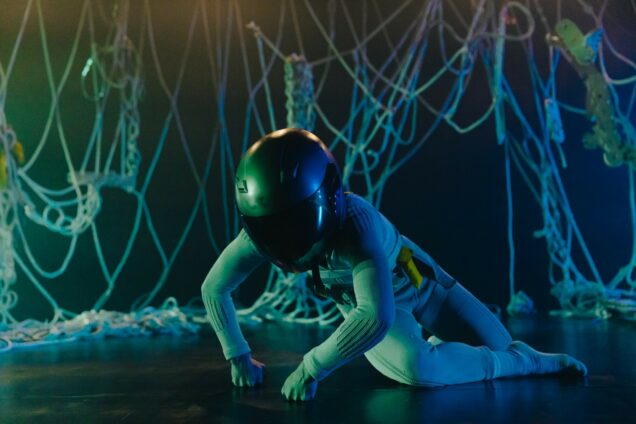
What advice would you give to people wanting to practice dance?
For those who are eager for a professional practice, be prepared for changes and to live with uncertainty. Your medium is the body, your body, the one that is constantly evolving over time, as much physically as intellectually and emotionally. As an artist, you must constantly be ready to adapt, renew yourself, reinvent yourself.
But in my opinion, everyone should dance even if just for fun, even if secretly in their room! If you want to dance, “go for it”, your physical and mental health will thank you!
